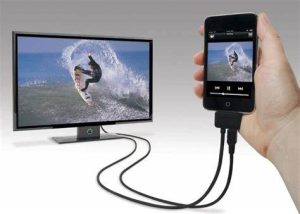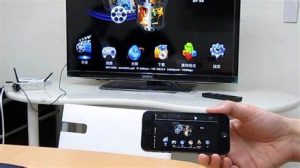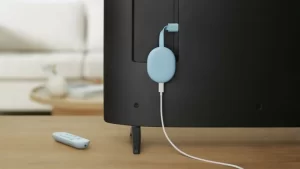Mobile devices have become a ubiquitous part of our lives, and our smartphones are no exception. With the advancements in technology, smartphones have become more powerful and capable of handling a wide range of tasks, including streaming video content. However, sometimes you may want to enjoy your favorite movies, TV shows, or games on a larger screen. In this guide, we’ll show you how to connect your Android phone to your TV using different methods.
Chapter 1: Understanding the Different Connection Types
Before we dive into the methods of connecting your Android phone to your TV, it’s essential to understand the different connection types available. Here are the three main types of connections you can use:
- HDMI: HDMI is the most common and popular type of connection for connecting your Android phone to your TV. HDMI is capable of transmitting high-definition video and audio signals.
- Wireless: Wireless connections use technologies such as Wi-Fi or Bluetooth to connect your Android phone to your TV. These connections are convenient because you don’t need to connect any cables, but the video and audio quality may not be as good as HDMI.
- MHL: MHL stands for Mobile High-Definition Link and is a technology that allows you to connect your Android phone to your TV via its micro USB port. Not all phones support MHL, so make sure to check if your phone does before attempting to use this connection type.
Chapter 2: Connecting Your Android Phone to Your TV via HDMI

The HDMI connection is the most reliable and easiest way to connect your Android phone to your TV. Here are the steps to follow:
- Connect one end of the HDMI cable to your TV’s HDMI port and the other end to your Android phone’s USB-C or micro USB port (depending on the type of port your phone has).
- Turn on your TV and switch to the HDMI input that you connected your phone to.
- Your phone’s screen should now be mirrored on your TV. If not, you may need to change your TV’s input settings or adjust your phone’s display settings.
Chapter 3: Connecting Your Android Phone to Your TV via Wireless

Connecting your Android phone to your TV via wireless connections is convenient because you don’t need any cables. Here are two wireless connection methods you can use:
- Chromecast: Chromecast is a device that allows you to stream content from your phone to your TV wirelessly. To use Chromecast, you’ll need to plug it into your TV’s HDMI port and connect it to your Wi-Fi network. Once set up, you can use the Chromecast app on your phone to stream content to your TV.

- Miracast: Miracast is a wireless display standard that allows you to mirror your Android phone’s screen to your TV. To use Miracast, your TV needs to support this technology. You’ll also need a Miracast-enabled device, such as the Microsoft Wireless Display Adapter, to connect your phone to your TV.
Chapter 4: Connecting Your Android Phone to Your TV via MHL
MHL is a less popular connection method, but it can be useful if your phone supports it. Here are the steps to follow:
- Connect one end of the MHL cable to your TV’s HDMI port and the other end to your Android phone’s micro USB port (make sure your phone supports MHL).
- Turn on your TV and switch to the HDMI input that you connected your phone to.
- Your phone’s screen should now be mirrored on your TV. If not, you may need to change your TV’s input settings or adjust your phone’s display settings.
Chapter 5: Troubleshooting Tips
Sometimes, you may encounter issues when connecting your Android phone to your TV. Here are some troubleshooting tips to try:
- Make sure your phone and TV are on the same Wi-Fi network: If you’re using a wireless connection, make sure both your phone and TV are connected to the same Wi-Fi network. If they’re not, you may not be able to connect.
- Check your cables and connections: If you’re using a wired connection, make sure your cables are connected correctly and not damaged. A loose or damaged cable can cause connectivity issues.
- Restart your devices: Sometimes, restarting your phone and TV can resolve connectivity issues. Try turning off both devices and turning them back on.
- Update your devices: Make sure your phone and TV are running the latest software updates. Updates can sometimes fix connectivity issues.
- Check your TV’s settings: If you’re having issues with the display, make sure your TV’s settings are set correctly. Adjust the aspect ratio, resolution, and other settings to match your phone’s display settings.
Conclusion
Connecting your Android phone to your TV is a convenient way to enjoy your favorite content on a larger screen. Whether you prefer a wired or wireless connection, there are several options available, including HDMI, wireless, and MHL. By following the steps outlined in this guide, you can easily connect your Android phone to your TV and troubleshoot any issues that may arise.